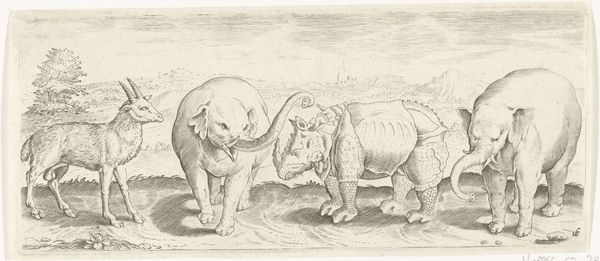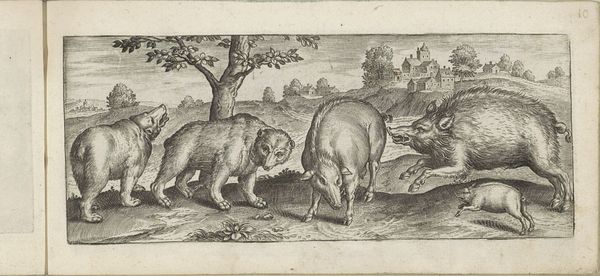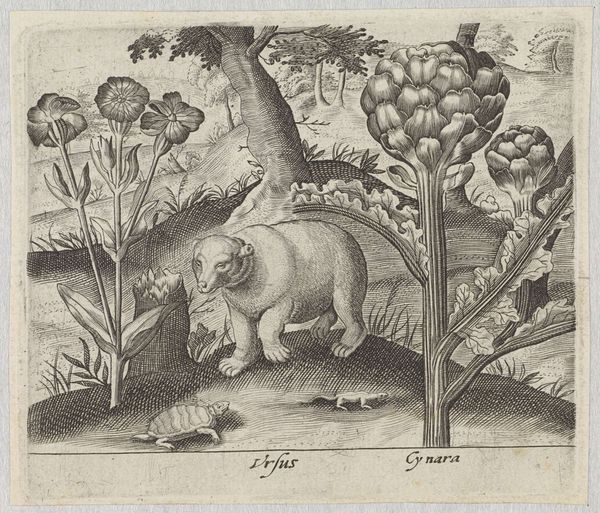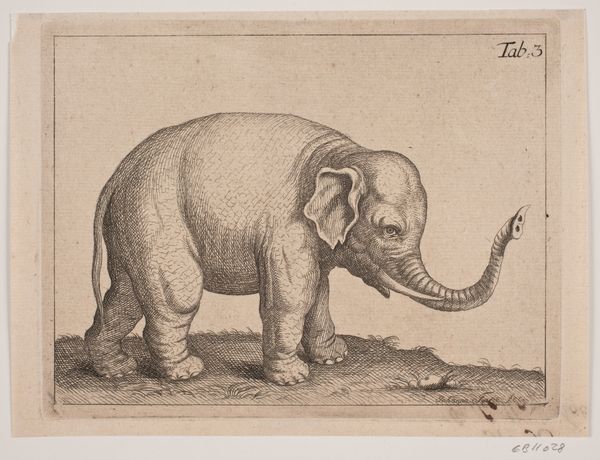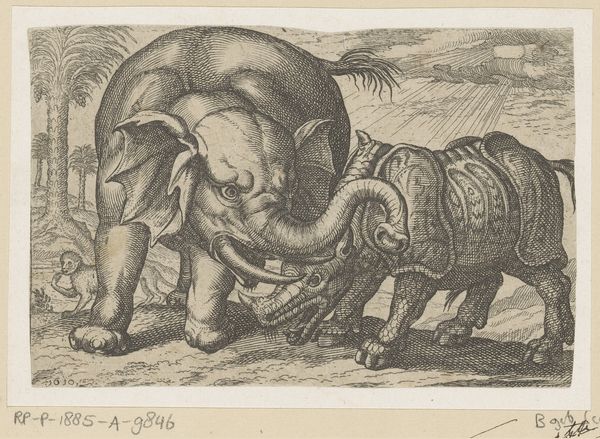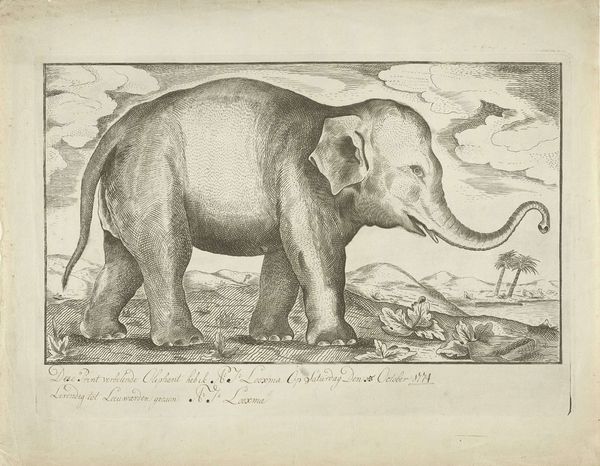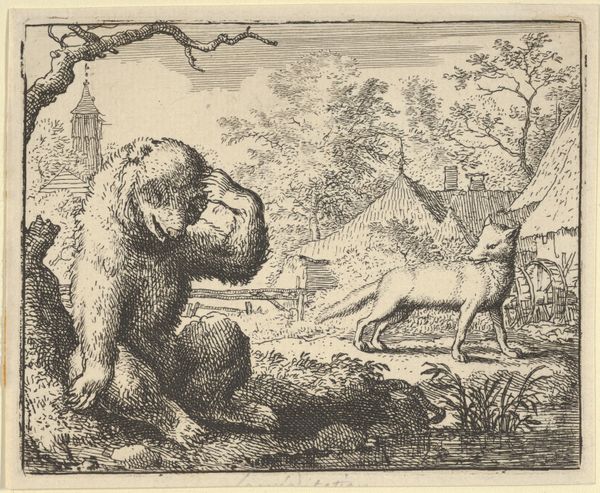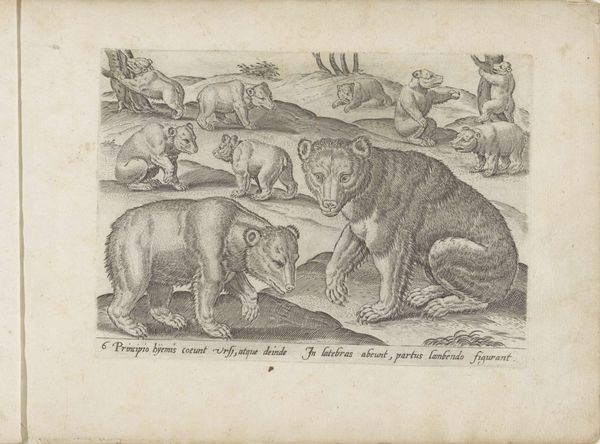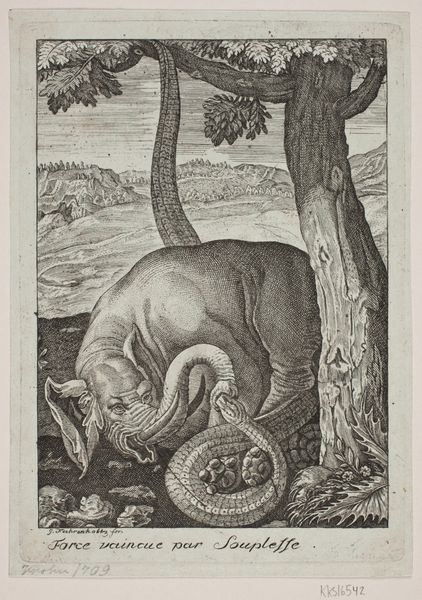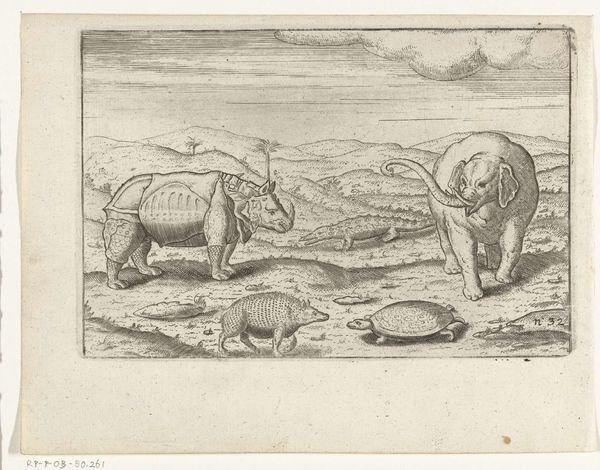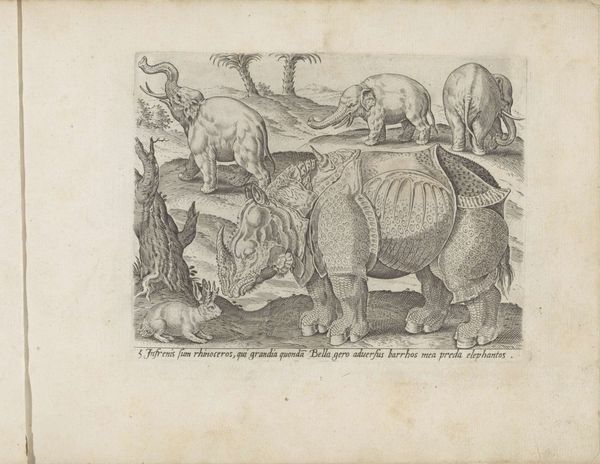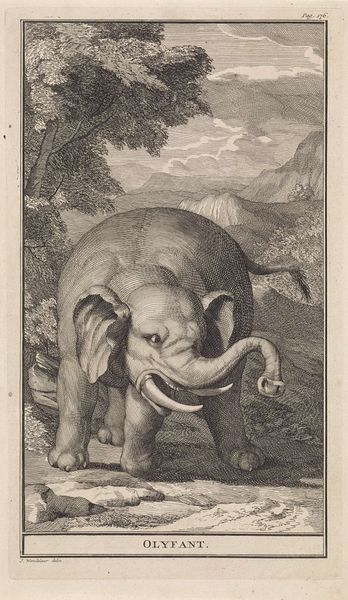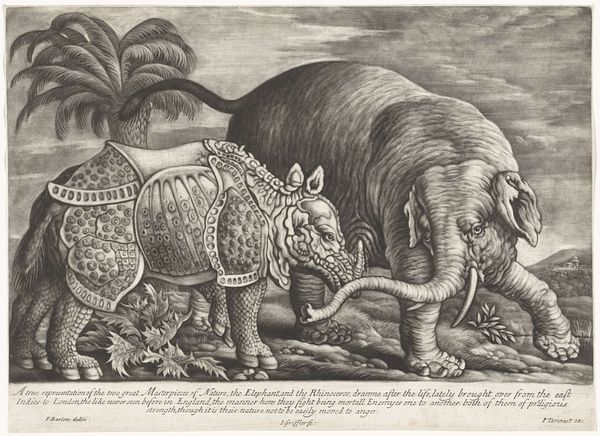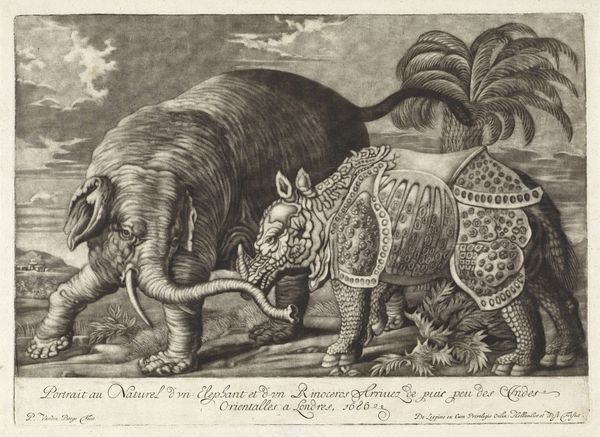
print, engraving
# print
#
landscape
#
11_renaissance
#
genre-painting
#
engraving
Dimensions: height 87 mm, width 208 mm
Copyright: Rijks Museum: Open Domain
Editor: So, here we have Marcus Gheeraerts' "Gazelle, elephants and rhinoceros in a landscape" from 1583, an engraving on paper. I find it fascinating how he brings these very different animals together. But what jumps out at me is that the rhinoceros almost looks like it’s wearing armor. How do you interpret this work, seeing these exotic creatures rendered in such a peculiar way? Curator: It’s funny you mention the rhino’s "armor" – that’s often how they were perceived then! Remember, most Europeans hadn’t actually *seen* these creatures. This print wasn't about realism; it’s a window into a world of discovery filtered through Renaissance imagination. Gheeraerts probably relied on descriptions, sketches made by others, perhaps even taxidermied specimens if he was lucky. Editor: So, it's more about the *idea* of these animals than the actual animals themselves? Curator: Precisely! Think of it as visual poetry rather than a zoological record. The landscape too is rather generic, isn't it? Like a stage set. These exotic beasts were trophies, curiosities to be displayed and marvelled at. This image fed the European appetite for the exotic at a time when global exploration was booming, creating desire as much as it documented. I wonder, does the stiffness of these animals give you a hint of their being uprooted? Editor: That’s a great point! I hadn't thought of it that way. There’s a real sense of… detachment about them. More like symbols. It shifts my entire perspective of this work, as a portal into both zoology and colonialization. Curator: And there you have it – layers upon layers, interwoven. It's so great when art continues to engage, challenge, and reveal, centuries later, don't you think? Editor: Absolutely. Now I can't wait to apply all of these lessons to my paper on Early Modern Art. Thanks!
Comments
No comments
Be the first to comment and join the conversation on the ultimate creative platform.
